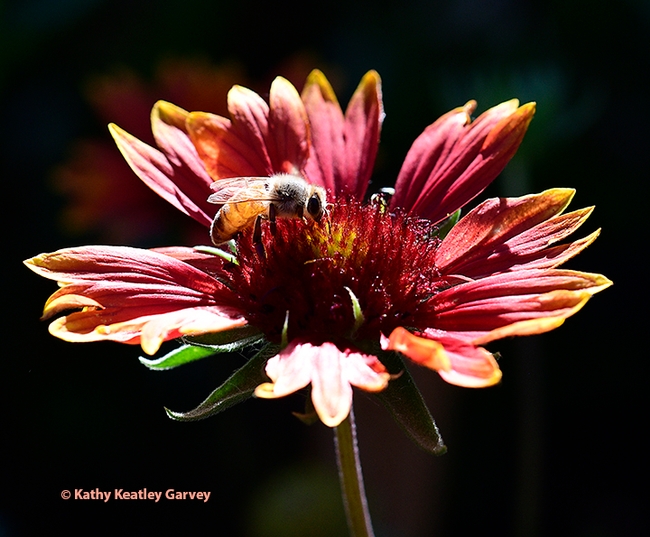Photographers call the first hour after dawn and the last hour before dusk "The Golden Hour."
That's when the sunlight is softer and warmer.
It's also called "The Magic Hour."
Compare that to high noon, when the sun casts such strong highlights and shadows on the subject that even images of Miss Universe and Miss America look harsh.
Now if you photograph a golden honey bee during The Golden Hour, the world looks even warmer and softer.
But use the term, Golden Hour, figuratively. As Wikipedia explains: "The term hour is used figuratively; the effect has no clearly defined duration and varies according to season and latitude. The character of the lighting is determined by the sun's altitude, and the time for the sun to move from the horizon to a specified altitude depends on a location's latitude and the time of year. In Los Angeles, California, at an hour after sunrise or an hour before sunset, the sun has an altitude of about 10–12°. For a location closer to the Equator, the same altitude is reached in less than an hour, and for a location farther from the equator, the altitude is reached in more than one hour. For a location sufficiently far from the equator, the sun may not reach an altitude of 10°, and the golden hour lasts for the entire day in certain seasons."
The honey bee (below), foraging on a blanket flower, Gaillardia, couldn't discuss Golden Hours, seasons, latitude and longitude with you. But she knows how to return to her colony (which could be five miles away) and how to communicate with the other bees. And that, too, is Golden.
Attached Images:
